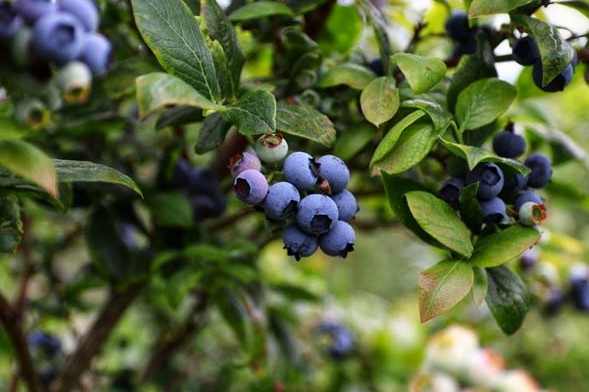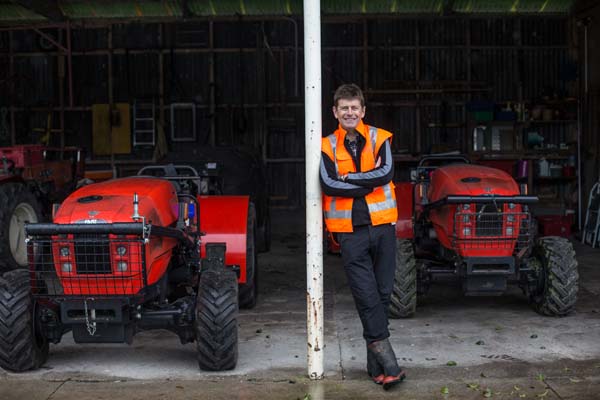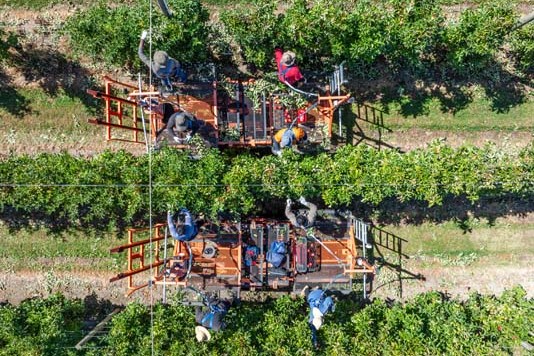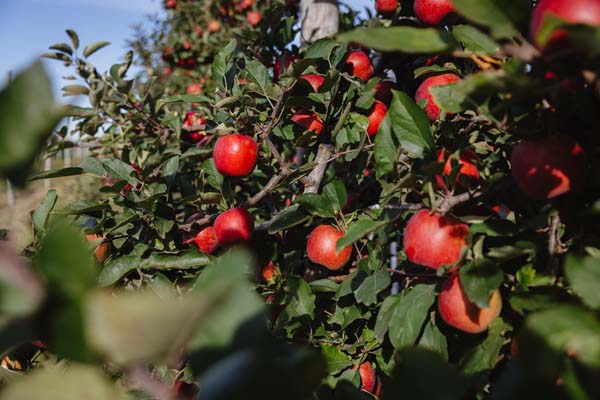Milk prices may be breaking records, but the breakeven price has also soared as input costs ramp up alongside global events. Anne Lee reports.
With record milk price forecasts and the futures market soaring over an eyewatering $10.20/kg milksolids (MS) mark it could seem that warnings to take action to protect profit margins are unnecessarily pessimistic.
But we’re living in unusual times. The global pandemic is still casting a “long Covid” pall over world economies, labour markets and supply chains and the effects of Russia’s invasion of Ukraine have struck a fire under fuel, fertiliser and feed prices.
So while milk prices have climbed to new heights the costs of producing it have rocketed along the same trajectory.
It seems staggering that a breakeven milk price could hit $8.75/kg MS but that’s the number Wairarapa-based dairy consultant Chris Lewis of BakerAg has arrived at for the coming season in the company’s long-standing budget model.
It’s what’s needed to cover the cost of milk production, along with interest and debt reduction, tax, drawings and asset replacement allowance or depreciation.
It seems high, and it possibly is because farmers are already reacting to higher input costs and making adjustments to how they farm but the purpose of Chris’ exercise is to illustrate what the outcome would be if the lower North Island, 160-hectare, 395-cow, modelled farm continued to use the same level of inputs this season.
“We’ve maintained our fertiliser and feed inputs at a status quo level so we’ve borne the brunt on their higher costs and we’ve made adjustments to labour costs to reflect rising wages and a push by farmers to try and get more labour onfarm.
“We’ve also made assumptions on actively managing tax to lower that cost but we’ve increased interest rates.
“Farmers who have done a breakeven milk price analysis will have had that wake-up call that they should be looking at what they’re doing in their business this season because the margin they thought should be there may not be.
“We’re not saying people are going to lose money this season but we are saying be careful – look at what’s happening to the margin – how it could be squeezed by these higher costs.
“Knowing your breakeven cost now will help inform your management and mean you can take action and plan accordingly.
“Do nothing and the breakeven milk price could soar along with the payout.”
The budget shows a hike in farm working expenses of almost 14% taking the total farm working expenses to $6.49/kg MS for the modelled farm.
That compares to $5.63 for the 2021/22 season and $5.12/kg MS for the previous season.
“If we take positive action to manage some of the price increases, we won’t hit that $6.49 figure but if we go blindly into the season we will or worse – and that’s before interest, tax, drawings, wages of management and depreciation.
“The 14% increase we’re seeing in this season’s budget comes on top of a 10% increase in the year we’ve just finished.
“We’ve been a little sheltered in the year just finished because a number of cost rises didn’t come in till part way through the season.
“We’d already paid for our spring nitrogen before last season’s price rises started and we’d paid for winter grazing costs right at the start of the season and we’d contracted in feeds like palm kernel and locked-in prices.
“This season we’ll get the full brunt of that 10% increase with another 13.7% increase on top.”
Fertiliser
Fertiliser has seen the biggest leap in prices, jumping 23% on the previous season’s budget.
Chris’ budget has assumed a continuation of the farm’s maintenance fertiliser and lime policy with a 300kg/ha application rate of sulphur superphosphate and 138kg/ha of nitrogen applied as urea.
“We’ve already seen farmers cut nitrogen application rates back significantly and get smarter in how they use it.
The Lincoln University Dairy farm (LUDF) has shown how it’s been able to maximise the response to nitrogen and reduce the amount it puts on by grazing at the third leaf stage.
The slightly longer rounds and reduced number of grazing rounds across the season that result meant that, with a policy of applying nitrogen after cows, nitrogen application also reduced.
Skipping applications during the hottest periods when response rates are lower can also lower use with minimal impact on pasture growth.
Chris says most of his clients are now talking about how to get nitrogen use down even further below the nitrogen cap of 190kg N/ha for each paddock.
“Talk to your fertiliser reps – be proactive about what you can do so you’re putting the right nutrients in the right amounts in the right places.
“Start the conversation with a set budgeted dollar amount for the season and ask them to come up with a plan that will give you the best option to achieve the right nutrient status for that price rather than bringing in the bulky and putting on a blanket rate across the farm and then living with the cost. Having comprehensive soil test results for the whole farm will enable more cost-effective fertiliser management plans to be drawn up.
Feed
Feed cost increases will vary depending on feed type but for the modelled farm, which buys in palm kernel expeller (PKE) and silage but makes its own baleage and hay on farm, feed costs have risen by almost 15%.
He’s used a budgeted PKE price of $550/ tonne up $100/tonne on last year’s budget, adding another $14,100 to costs.
Silage is budgeted at 35c/kg drymatter (DM) – up from the 33c/kg DM last season increasing costs by $5700.
Baleage and hay costs have gone up by about $15,000 with some of that cost due to refilling the hay shed after last season’s dry autumn and the rest due to increased making costs.
Chris has put the cost of baleage at $80/ bale and hay at $95/bale – hay costs are $20/ bale up.
Calf rearing feed costs have jumped by $25/ calf in the budget to $150/calf.
“We are seeing some people reviewing their farm system as a consequence of higher feed prices – particularly if they’ve been using some of the more expensive feeds.
“They’re saying rather than chasing milk price by intensifying my system – as we’ve seen in the past when milk price has been high – maybe I should try simplifying it.
“We’re seeing costs of grain in Southland for instance hitting $650/tonne crushed and in the silo, and that may see some people change from being all-season feeders to just feeding it on the shoulders.”
The purchased feed sensitivity analysis for palm kernel (see table one) shows the red zone where the cost of using the feed to produce a kg MS is above even current high milk prices.
In some regions farmers have good feed inventories carried over while in other areas the dry autumn depleted them.
“In those areas where they have feed inventories, we know that smart use of them during the spring as a means to keep pasture covers to target through calving can be a good way to reduce the amount of more expensive imported supplementary feed fed at that time.”
Wages
The cost of wages has escalated through the season and is continuing to climb.
Many farmers have been running at a full labour unit equivalent down over the last two seasons as a result of a dire labour shortage across many sectors due to widespread effects of Covid restrictions.
Chris says wages costs have climbed significantly for this season because of both an increase in wage rates and farmers working hard to find additional people.
“If they can find them, farmers are getting back up to fully staffed levels. They’re having to pay more for people coming on to the farm and they’re increasing wages and salaries for existing staff too.
“I’m generally seeing about a 7% increase in wages if staff numbers are staying the same but we’re seeing a genuine move to find more relief or additional staff where people can get them and for that reason on our (modelled) farm we have an increase in staff cost of 10.7%.
“On a larger farm than our example farm we would expect people to be trying to get back that 0.5-1 full-time equivalent.
“We’ve seen capital expenditure over the last couple of years on technology like cup removers to help ease some of the workload pressure that’s come on with the people shortage.
“We’re also seeing clients now buying or looking at collar technology.
“It may not necessarily mean you’ll save on wages because you’re already running below the full complement of staff but people are looking at how they get the best out of the people they have – how they can be more effective and efficient given the wages and salaries they’re on.
“We’re seeing more farmers upgrading their housing for staff – a lot of paint and new carpet going in, kitchens being renovated.
“Farmers recognise that staff retention is hugely important – you might not get anything back directly from new carpet but there’s a big cost to having people move on and never more so than now.
“Turnover means not just those direct costs of recruiting people and probably having to pay more but there’s a loss in onfarm efficiency until new people are up to speed with the farm and systems.”
Investing in people in terms of training and investing in good people management and leadership is also a way to improve efficiency and reduce wastage onfarm.
“Things like lean management systems – you might not save on wages but the savings on other things right across the board can be substantial. From things like having to buy fewer pigtails to people doing their pasture walks and feed allocations more accurately that then results in an extra 50kg MS/ha – it adds up.”
Other costs – interest, principal, tax, capital and drawings
Interest rates have been on the rise and Chris has factored in a lift of 1.25%/year for the budget which equates to a 23% increase in total interest cost for the year.
Principal repayments have been reduced in his budget by 50% from $100,000 to $50,000.
Every farmer’s scale and situation varies as does their risk profile and the expectations from their bank so good communication is required to ensure no surprises for either party.
Chris has assumed active tax management with good communication with the accountant which has allowed a 44% drop in tax cost in the modelled farm situation.
Drawings have been maintained at last season’s rate of $125,000 although this is up from $95,000 in the 2020/21 year.
Chris’ budgets are based on the financial year – as per farmers’ accounts and include the milk price payments made within that period.
Last season’s washup payment therefore flows into the current season so milk income is the advance from the current season with last season’s washup payment along with any other co-operative difference payment given the modelled farm is a Fonterra supplier.
It means that, based on Fonterra forecasts, the milk income is down slightly for the 2022/23 year.
The rising costs and slightly lower in year milk income means the final budget gives an operating profit that’s 70% down on last financial year.
Towards the end of June, it was possible to hedge milk on the futures market at more than $10.20/kg MS.
“We can’t say whether it’s a good time to fix or hedge a portion of your milk price but we can say farmers should get good advice on it,” Chris says.
“At the moment – based on the budget and the costs we’re seeing our clients facing farmers will need to take action on managing their farm working costs to get the returns they might have expected at the current milk prices.
“While we expect farmers will be making capital investments – and there’s room to do that – we’re urging caution and urging farmers to be on top of the budget, review it and monitor closely.
“There is a risk of ambivalence in a high milk price environment – there’s a risk people back off the focus on spending.
“With the numbers we have here we’re saying don’t stop, don’t back off on that focus – all the good things you’ve done in the past in terms of cost control, high pasture utilisation and good pasture management – they’re all still very relevant – keeping doing them.”





